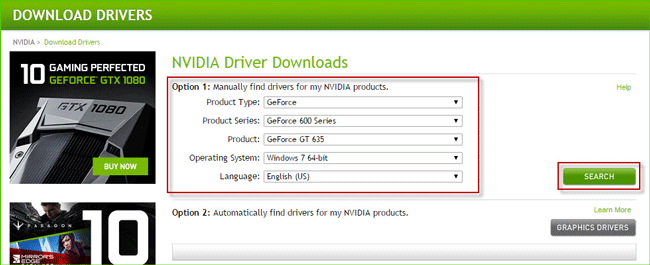

:max_bytes(150000):strip_icc()/Downloadagainannotated-693601bd88c440b795c9e16fc5548646.jpg)
Or, perhaps, it's the kind of performance upgrade that only works in very specific scenarios. Therefore, on the off-chance some of you adhere to the 'if it ain't broke, don't update' maxim, we wanted to find out if there really was any extra performance to be gleaned, or whether it's a big of marketing speak. However, the newest Nvidia drivers are claimed to provide a significant performance upgrade.

Going back to old reviews to revisit them purely based upon driver updates would be a full-time occupation. We tend to assume that everyone uses the latest drivers all the time. This usually means that new driver launches, besides obviously using the most up-to-date ones on our new reviews, generally pass us by. Lately there have been so many product launches, and there will soon be more, that we've been absolutely run off our feet ensuring you get fresh content at the right time. The last drivers to get updated 3D Vision support will be GeForce Game Ready version 418 releasing in April.As we're sure you are aware, it's incredibly busy in the OC3D offices. However, VR is seeing considerably more adoption these days compared to the 3D glasses approach, and thus, Nvidia has decided to stop supporting 3D Vision in future driver releases. Nvidia is also offering support for VR headsets that are very similar in nature to 3D glasses. Lastly, since there is no hardware processing involved, there is the possibility of getting double-image artifacts and ghosting. Then there are the headaches that may come with prolonged usage of the 3D glasses. First of all, the GPUs need to render twice as many frames, so the performance is essentially halved. Similarly, Nvidia’s 3D glasses have lenses synced to 60 Hz, and the 3D Vision software converts gaming visuals into stereoscopic information, but there are some shortcomings here, as well. The problem with 3D glasses is that it requires double the refresh rate of a regular screen, so display makers had to use 120 Hz panels to enable 60 Hz stereoscopy for each eye. Granted, this technology is still a thing in cinemas, but the appeal of 3D glasses gradually faded in the past several years, as screen makers like Samsung, LG, Sony and Panasonic eventually stopped releasing home theater or gaming products that support any 3D features.

Remember when TVs and LCD monitors supporting 3D glasses were the next best thing? Even Nvidia recognized the potential of such a technology back in 2008 and decided to release its own 3D glasses compatible with select TVs, monitors and projectors along with a special 3D Vision driver.


 0 kommentar(er)
0 kommentar(er)
